February 5th, 2015 by Rachel | Tags: Disability, Health, Peace Corps, Photo Essay, Photography | No Comments »
“Water has no color, smell, taste or calories, but water is a vital element for all life forms. No human, animal or plant can live without it. From elephants to bacteria, water is essential and nothing can replace it. No water means no life. The water quantity on earth is very constant. The same water that dart’s first inhabitants drank is the same we use today. It is the whole water that ever existed or will ever exist. The water on earth is on a continuous circle from oceans to atmosphere, then on the ground, river and back to the oceans. Unfortunately, in many areas, water is a scarce resource. The water crisis is getting more severe. The lack of water menaces the economy and people’s health in about 80 countries of the world. About 40% of the world’s population does not have access to clean water or hygienic conditions,” said Hilda, one of my work partners, on the radio a few weeks ago.
In the past two months, as I interviewed persons with disability, I kept hearing over and over again one particular problem — Access to water. Many of those with mobility disability can’t walk to the water pump, public tap, or well. Many can’t carry buckets or jugs as they need both of their hands to hold the crutches or maneuver their wheelchairs. Even those who are visually impaired face the obstacle too. They need to use one of their hands to hold the white cane or walking stick (Yes, many unfortunately use an ordinary wooden walking stick). Some visually impaired persons have also mentioned that they just simply can’t navigate to the water site or they face the risk of falling into wells. As a result, most persons who have mobility disability or are visually impaired have their family members get water for them or pay someone to get water. While Bamenda is considered one of the most modern city in Cameroon, this city is still many years away from being fully developed. Many homes still do not have direct water access. This is the same for many parts of Northwest – there are many homes in the region that do have direct water access but there are also many that do not have direct access.
While I have not yet calculated the statistics on how many persons with disability who do not have direct water access and cannot go to a well, pump or public tap, I can easily say that almost all of those with mobility and/or visually impairment cannot get water. Because I found this issue to be very pressing, I started the dialogue with my work partners. Through a connection of a professor at University of Toronto, I met a gentleman named Gabriel who completed his Masters in the UK and did a thesis on water and disability. I would like to quote what he said, “There is a difference between access and accessibility. There may be access to water, but is it accessible to persons with disability?” Putting direct water access into all homes would certainly be the most ideal solution. However, it would take decades before we can finally see every home having direct water access in Bamenda, even we put a huge amount of energy and efforts into pleading to the government. Thus, Gabriel and I focused on discussing how we can improve the current water access by making them more accessible for persons with disability so that they can enjoy better access now while waiting to finally get direct water access. Examples include building a ramp by the well or pump where there may be steps to get to the pump or a wall around the well to prevent those who are blind from falling into the well.
A few weeks ago, Hilda, one of my work partners, and I met a gentleman named Farmer Tantoh who is an Ashoka Fellow and specializes in improving access to good quality water to the general population. It’s important to note that he does not have any disability. We spoke on the radio together about how getting water is a huge obstacle for persons with disability, especially during dry season when water is more limited than ever. We talked about how the councils should perhaps improve access to water by sending out trucks loaded with water jugs and delivering them to the homes of persons with disability. In all honesty, I was not satisfied with this idea because it still requires reaching out to the government and making this initiative a reality would still take a long time. We have to keep in mind that like the United States, the government system in Cameroon is filled with bureaucracies although I would say the government system in Cameroon is far less efficient than in the United States.
While Farmer Tantoh spoke a lot about improving access to safe and clean water to prevent maladies such as Typhoid Fever, he didn’t have a whole lot to say on the radio about making water more accessible to persons with disability. The issue just never really occurred to him until he heard our concerns and saw one particular moment two weeks later. He invited Hilda and I to his water project site in a village, Bafut, located just outside of Bamenda. Once we arrived at the water site, we immediately noticed a major problem. Hilda could not get down to the water site as a wheelchair user. We were standing next to a huge deep crater. The water faucet which we would call the community tap was located at the bottom of the crater. The only way to get to the bottom was to take the stairs which was beautifully constructed with concrete. Hilda had to stay behind at the top and miss the opportunity to see the community tap and also the whole system of how the water reaches to the faucet. While it was unfortunate that Hilda couldn’t come down the stairs, it was an opportunity for Farmer Tantoh to finally think about ensuring that water access is accessible to persons with disability when working on future water access projects. It also led us to discuss about how we can improve the water site we were visiting. He shared that he just received some private fundings and will use the funds to implement a solar pump to bring the water to a faucet at the top of the hill so that all persons with disability and also elders with limited mobility can access water.
This past Tuesday, Farmer Tantoh was generous enough to invite me to see another water project that he is currently working on. He took me to an area in Bamenda called Kwen. Once we arrived by a moto bike to the community which was packed with poorly constructed homes, Farmer Tantoh led me up the poorly built stairs and then up through very rocky steep hills. There are were a couple moments when I had to place my hands on the rocks as I climbed up the steep hills to make sure I didn’t slip and fall. Then we walked through a winding path to get to the water site. It was like hiking on a mountain. Once we arrived at the site, I noticed how there were no water faucet but a pipe with water continually spilling out from a spring. So much water was being wasted. This is why Farmer Tantoh is after all choosing to help fix the infrastructure of this water site. He explained to me that he is going to work with the people in the community to construct a new system including a new faucet so that water could be stored underground when the faucet is not turned on. This is especially an important fix because during the dry season, water dries up easily and so, storing water is crucial so that when there is no water coming out of the spring, they can still get water from the storage.
However, in all honesty, I was more depressed by the accessibility to the water site than water being wasted. In my mind, I kept saying, “Wow! Wow! Wow! No wonder why so many people with disability say they can’t get water.” I was fully realizing for the first time how pressing this issue is for the disability community. In fact, I said to Farmer Tantoh, “Getting to this water site is concerning not only for persons with disability but for all persons without disability. Imagine during rainy seasons when the path is muddy and rocks are slippery. Can you bet how many people have likely fallen on this path?” Farmer Tantoh agreed and said, “I’m sure many have fallen and gotten hurt.” Then I mentioned to him that I’m sure some people may have become disabled as a result of falling on the pathway. Not to mention, all the people who get water are carrying big jugs and buckets that hold gallons of water. Walking on steep and slippery hills with heavy buckets and jugs is not only challenging but also very dangerous.
I also learned that people come from homes as far as at least one kilometer to this particular water site because the water is clean and water is often available when water is out at other sites. I met a gentleman at the water site who lived about a kilometer from the water site and was carrying two six gallons jugs of water. I sat for about 15 minutes at the water site to observe. It was at about 9 AM in the morning, and it was very busy. There were a number of people waiting for their turn to get water.
Unfortunately, there are no funding at the moment to improve the pathway to the water site. However, I have put Farmer Tantoh, Gabriel and Hilda in touch via e-mail to discuss this situation to see if funds could be raised to improve the pathway to the water site and they could collaborate together to improve water access for persons with disability.
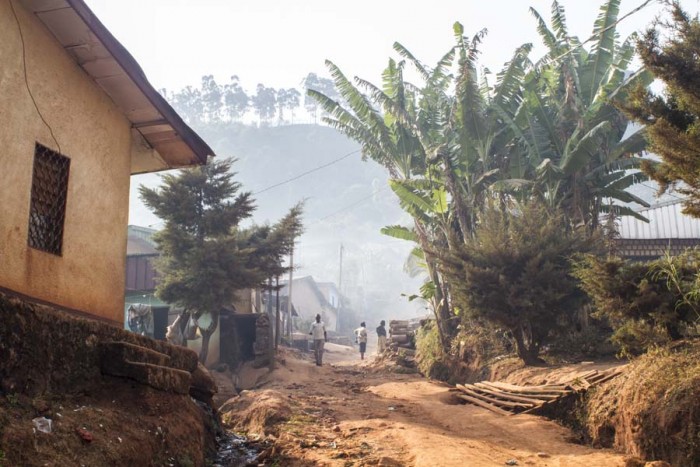
A pathway leading to the water site in Kwen, an area in Bamenda.
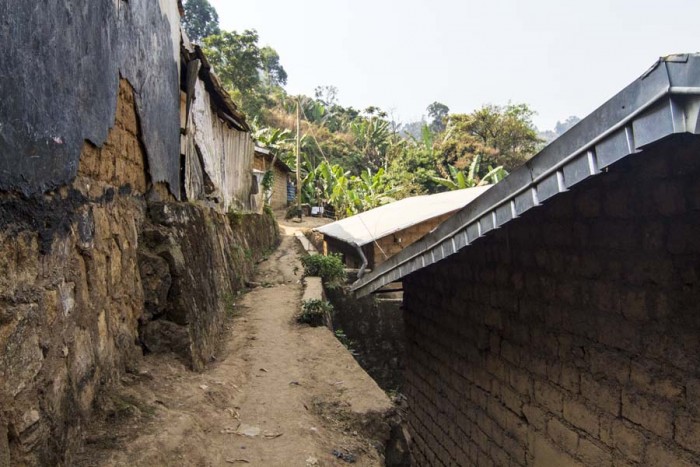
A pathway leading to the water site in Kwen, an area in Bamenda.
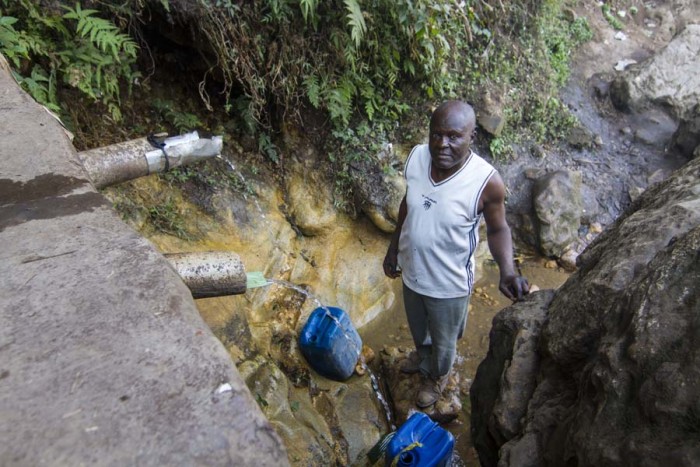
A man fetches water from the water site in Kwen.
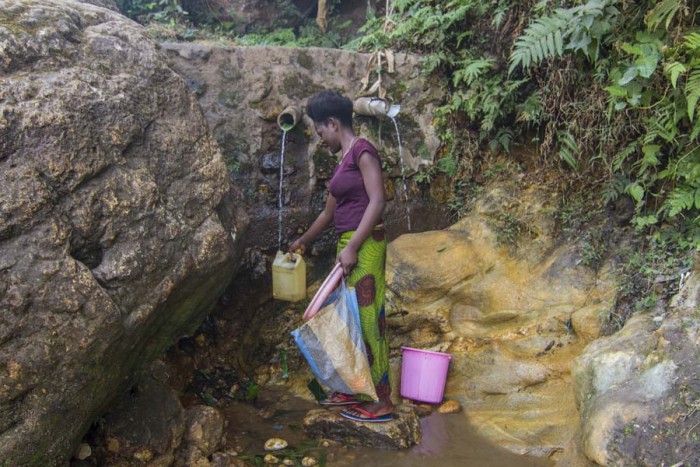
A woman is fetching water from the water site in Kwen.
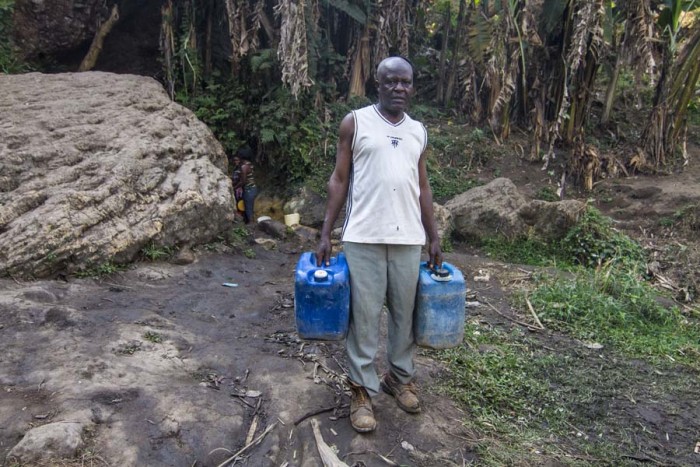
A man carries two jugs that carry about six gallons of water in Kwen.
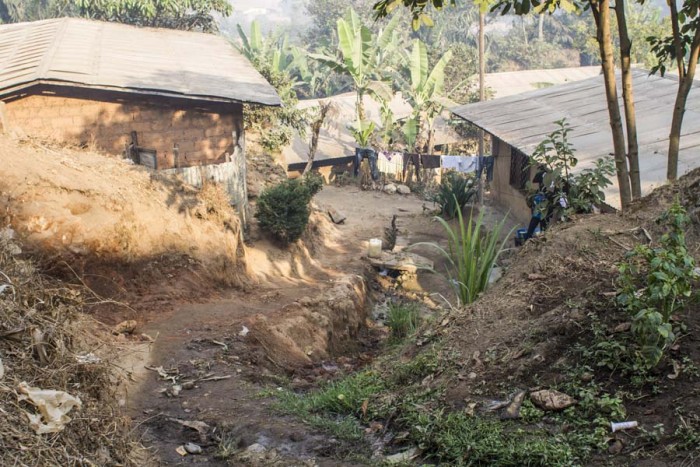
A pathway leading to the water site in Kwen, an area in Bamenda.
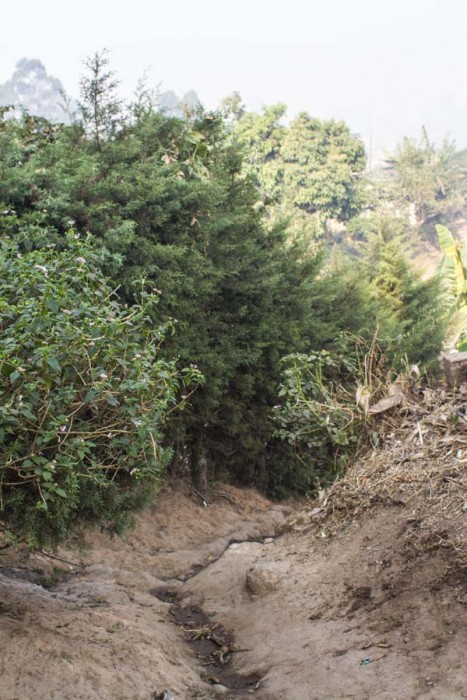
A pathway leading to the water site in Kwen, an area in Bamenda.
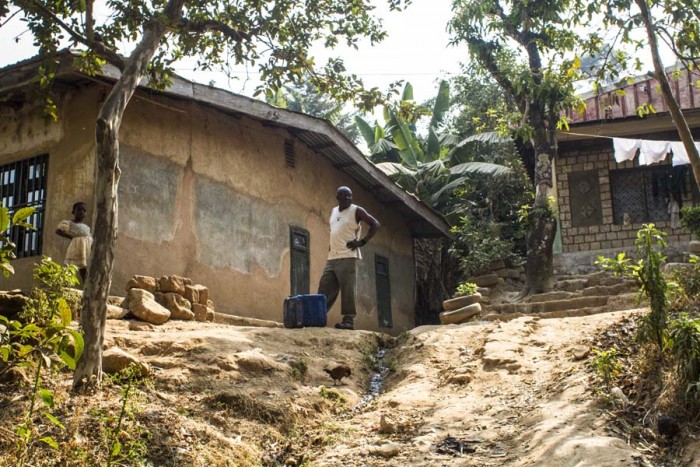
This man walks at least one kilometer to the water site to get water.
